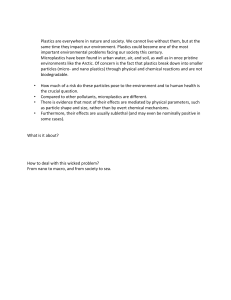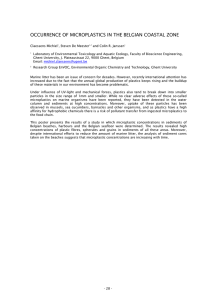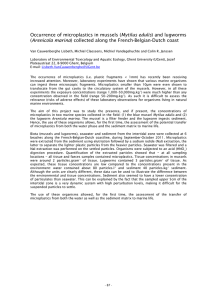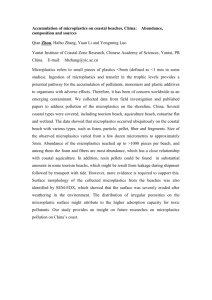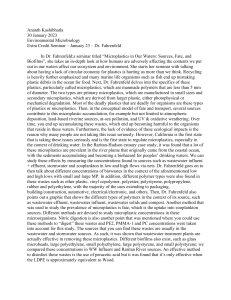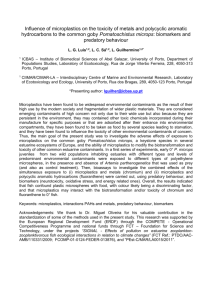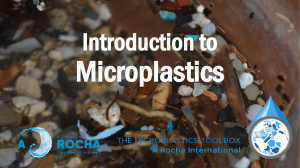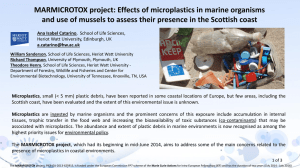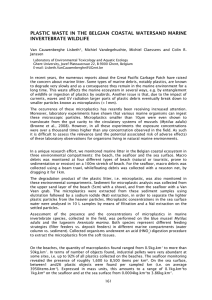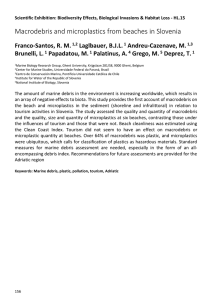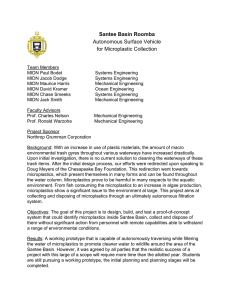PLASTICS ON YOUR PLATE? DETECTING MICROPLASTICS IN SEDIMENTS AND ORGANISMS
advertisement
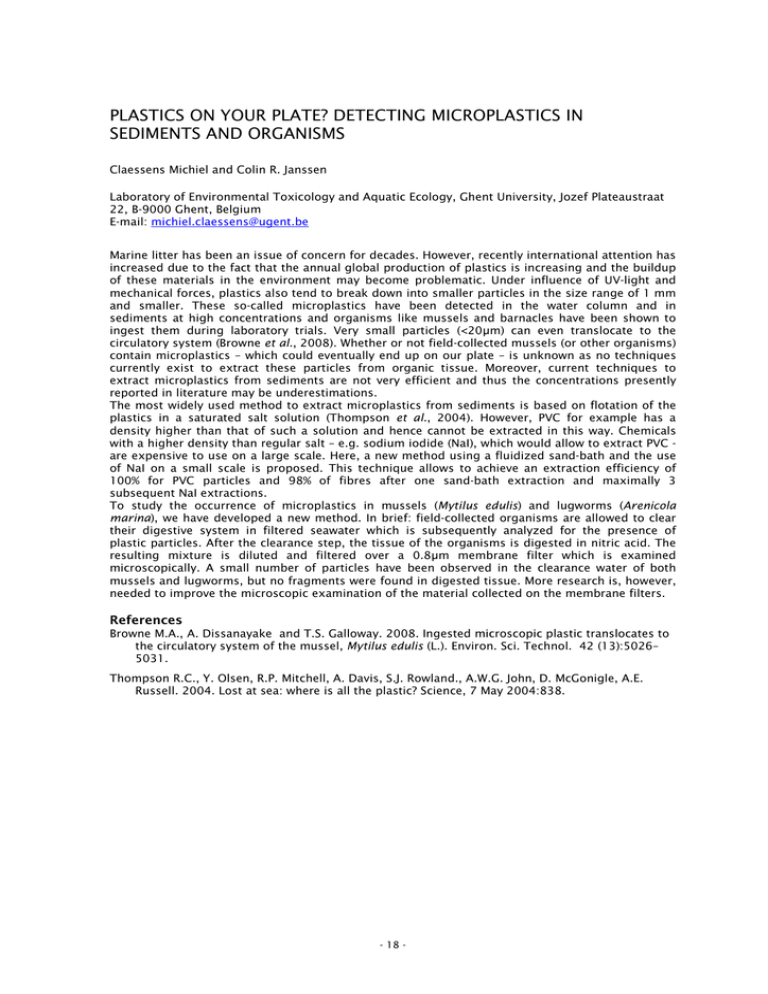
PLASTICS ON YOUR PLATE? DETECTING MICROPLASTICS IN SEDIMENTS AND ORGANISMS Claessens Michiel and Colin R. Janssen Laboratory of Environmental Toxicology and Aquatic Ecology, Ghent University, Jozef Plateaustraat 22, B-9000 Ghent, Belgium E-mail: michiel.claessens@ugent.be Marine litter has been an issue of concern for decades. However, recently international attention has increased due to the fact that the annual global production of plastics is increasing and the buildup of these materials in the environment may become problematic. Under influence of UV-light and mechanical forces, plastics also tend to break down into smaller particles in the size range of 1 mm and smaller. These so-called microplastics have been detected in the water column and in sediments at high concentrations and organisms like mussels and barnacles have been shown to ingest them during laboratory trials. Very small particles (<20μm) can even translocate to the circulatory system (Browne et al., 2008). Whether or not field-collected mussels (or other organisms) contain microplastics – which could eventually end up on our plate – is unknown as no techniques currently exist to extract these particles from organic tissue. Moreover, current techniques to extract microplastics from sediments are not very efficient and thus the concentrations presently reported in literature may be underestimations. The most widely used method to extract microplastics from sediments is based on flotation of the plastics in a saturated salt solution (Thompson et al., 2004). However, PVC for example has a density higher than that of such a solution and hence cannot be extracted in this way. Chemicals with a higher density than regular salt – e.g. sodium iodide (NaI), which would allow to extract PVC are expensive to use on a large scale. Here, a new method using a fluidized sand-bath and the use of NaI on a small scale is proposed. This technique allows to achieve an extraction efficiency of 100% for PVC particles and 98% of fibres after one sand-bath extraction and maximally 3 subsequent NaI extractions. To study the occurrence of microplastics in mussels (Mytilus edulis) and lugworms (Arenicola marina), we have developed a new method. In brief: field-collected organisms are allowed to clear their digestive system in filtered seawater which is subsequently analyzed for the presence of plastic particles. After the clearance step, the tissue of the organisms is digested in nitric acid. The resulting mixture is diluted and filtered over a 0.8μm membrane filter which is examined microscopically. A small number of particles have been observed in the clearance water of both mussels and lugworms, but no fragments were found in digested tissue. More research is, however, needed to improve the microscopic examination of the material collected on the membrane filters. References Browne M.A., A. Dissanayake and T.S. Galloway. 2008. Ingested microscopic plastic translocates to the circulatory system of the mussel, Mytilus edulis (L.). Environ. Sci. Technol. 42 (13):5026– 5031. Thompson R.C., Y. Olsen, R.P. Mitchell, A. Davis, S.J. Rowland., A.W.G. John, D. McGonigle, A.E. Russell. 2004. Lost at sea: where is all the plastic? Science, 7 May 2004:838. - 18 -
